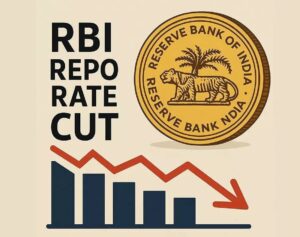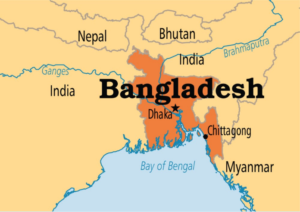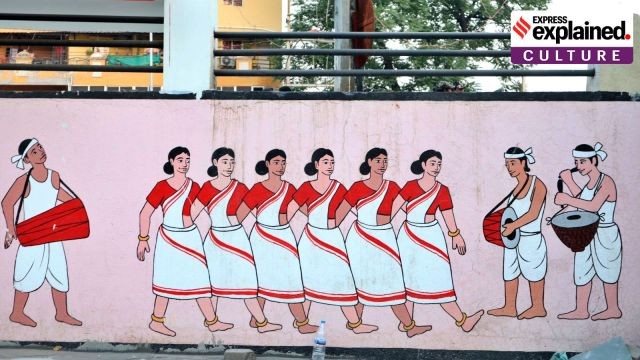UPSC CURRENT AFFAIRS – 01st April 2025
Sarhul: Celebrating Tribal Heritage and Identity through History and Politics

Why in News?
The Sarhul festival, celebrated by Adivasis in Jharkhand and the Chhotanagpur region, is a significant nature worship festival honoring the Sal tree.
About
- The Sarhul festival, celebrated primarily by the Adivasis in Jharkhand and the broader Chhotanagpur region, marks a significant occasion that welcomes the new year and the onset of spring.
- This festival, deeply rooted in nature worship, centers around the reverence for the Sal tree (Shorea robusta), which is considered sacred in Adivasi tradition.
- The Sal tree is believed to be the dwelling place of Sarna Maa, the deity responsible for safeguarding the village from adverse natural forces.
Nature Worship and Symbolism
- The central theme of the Sarhul festival is nature worship. It celebrates the vital relationship between the Sun and the Earth, symbolizing their union as essential for the continuation of life.
- In Adivasi belief, the Sun and Earth must come together for life to thrive, an idea that is symbolically enacted during the festival. A male priest, known as the pahan, represents the Sun, while his wife, the pahen, embodies the Earth.
- This union forms the basis of all life on Earth, emphasizing the interconnectedness of natural elements.
Key Rituals and Celebrations
The festival lasts for three days, with the primary rituals occurring on the second day at the Sarna Sthal (sacred grove). The sacred groves, located near Adivasi villages, serve as communal sites where nature is worshipped and life is celebrated. These groves are typically marked by triangular red and white Sarna flags, adding to the festivity’s vibrant atmosphere.
- First Day: Preparations On the first day of Sarhul, the village pahan, who observes a strict fast, prepares for the ceremonies. This includes fetching water for the rituals, cleaning homes, and collecting Sal flowers. These preparations are an essential part of honoring the sacredness of the festival.
- Second Day: Main Rituals The main rituals take place at the Sarna Sthal, where Sal flowers are offered to the deity, and a rooster is sacrificed. Villagers pray for prosperity, safety, and a bountiful harvest. The ceremony includes the sprinkling of holy water across the village, accompanied by traditional dances and songs such as Jadur, Gena, and Por Jadur. Ceremonial fishing and crab-catching by young men also form part of the celebration, symbolizing the gathering of food for the communal feast.
- Third Day: Community Feast The final day concludes with a grand community feast, where handia (rice beer) and a variety of delicacies are shared. The festival ends with the blessings of the pahan and communal prayers for peace and well-being.

Cultural and Geographical Spread
- The Sarhul festival is celebrated by various Adivasi tribes, including the Oraon, Munda, Santal, Khadia, and Ho, each of which may have its own unique customs and names for the festival.
- Over time, the festival has evolved from a hunting-based tradition to one that reflects the agricultural practices and lifestyles of the tribes in the Chhotanagpur region.
- Historically, during the 19th and early 20th centuries, when many Adivasis were sent as indentured laborers to different parts of India, including Assam’s tea gardens and the Andaman and Nicobar Islands, Sarhul traveled with them.
- Today, the festival is celebrated in various locations, including Nepal, Bangladesh, and Bhutan.
Evolution and Political Significance
- The evolution of Sarhul has not only been a reflection of changing Adivasi lifestyles but also a platform for asserting Adivasi identity.
- In the 1960s, Adivasi leader Baba Karthik Oraon started a Sarhul procession from Hatma to the Siram Toli Sarna Sthal in Ranchi.
- Over the past six decades, such processions have become an integral part of the festival, especially in Ranchi, where they serve as a focal point for Adivasi unity and pride.
- In recent times, Sarhul has also taken on political significance, particularly in relation to the Adivasi identity and their religious beliefs. Adivasi groups have called for the recognition of the Sarna faith in official records, such as the caste census, to distinguish it from Hinduism.
- While some Adivasi groups affiliated with the RSS argue that Adivasis are part of Hinduism, the demand for a distinct Sarna religion column in the census reflects a desire for cultural and religious recognition.
Conclusion
- The Sarhul festival, while deeply rooted in nature worship, is also a powerful expression of Adivasi cultural identity.
- It highlights the connection between people, nature, and the cyclical processes of life.
- As the festival continues to evolve, it not only celebrates the natural world but also serves as a platform for asserting the distinctiveness of Adivasi communities in the face of political and social challenges.
- Through its rituals and celebrations, Sarhul remains a vital symbol of community, identity, and resilience.

Genome study: 180 million genetic variants found in 9,772 individuals
UPSC CURRENT AFFAIRS – 09th April 2025 Home / Genome study: 180 million genetic variants found in 9,772 individuals Why

RBI slashes repo- rate
UPSC CURRENT AFFAIRS – 10th April 2025 Home / RBI slashes repo- rate Why in News? RBI reduced the repo

What does a bear market mean for Wall Street?
UPSC CURRENT AFFAIRS – 10th April 2025 Home / What does a bear market mean for Wall Street? Why in

Cabinet approves irrigation scheme for ‘modernising’ water management
UPSC CURRENT AFFAIRS – 10th April 2025 Home / Cabinet approves irrigation scheme for ‘modernising’ water management Why in News?

India ends transshipment facility for Bangladesh exports, cites congestion
UPSC CURRENT AFFAIRS – 10th April 2025 Home / India ends transshipment facility for Bangladesh exports, cites congestion Why in

Centre approves ₹63,000-crore deal for procuring 26 Rafale-M jets from France
UPSC CURRENT AFFAIRS – 10th April 2025 Home / Centre approves ₹63,000-crore deal for procuring 26 Rafale-M jets from France

Donald Trump raises taxes on Chinese imports to 125%, pauses tariffs on most nations for 90 days
UPSC CURRENT AFFAIRS – 10th April 2025 Home / Donald Trump raises taxes on Chinese imports to 125%, pauses tariffs

Union Cabinet approves ₹22,919 Cr scheme for promoting electronics component manufacturing
UPSC CURRENT AFFAIRS – 09th April 2025 Home / Union Cabinet approves ₹22,919 Cr scheme for promoting electronics component manufacturing


